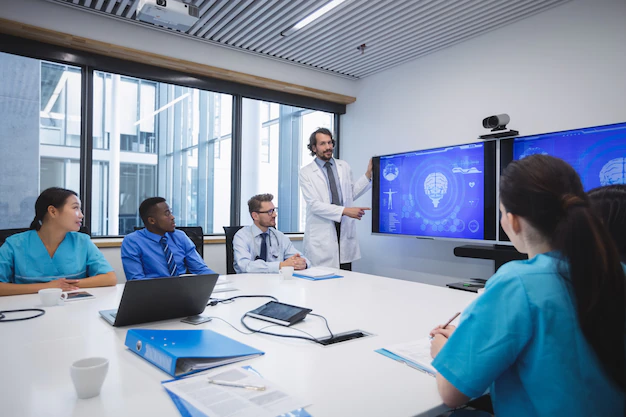Who does healthcare technology help in this world?
- naomijackson1712
- Aug 30, 2022
- 3 min read

In the health tech sector, I see a powerful combination of data and technology innovations becoming available that can enable a value-based healthcare revolution. Governments can now confidently accelerate the deployment of connectivity and technology to deliver real impact and scale in their health systems.
Ongoing digitalization and the introduction of new technologies, like tele health, are already breaking down boundaries and creating patient-centric healthcare systems. This trend will explode in 2019 and beyond, as the benefits of shifting tasks to less intensive care settings or even at home become increasingly recognized, and the healthcare expectations of digital consumers change.
Telehealth and AI: innovation is bringing patients closer to care
In mature countries, the shift to telehealth is helping eliminate waiting times and reducing transportation costs, but it is also playing an essential role in improving access to care for patients in emerging countries and rural locations (communities in rural locations are half as likely to have access to care as their urban counterparts).
Another area of exciting innovation with great scope for facilitating the delivery of universal health coverage is artificial intelligence (AI). AI is changing the way we treat patients by providing personalized treatment plans and has great potential to improve patient outcomes and the efficiency of care delivery. But the true value of AI can only be unlocked by combining it with knowledge of the clinical and operational context in which it is used - a people-centered approach that we call ‘adaptive intelligence’.
Combined with robotics and automation, these technologies will ultimately help doctors spend more time with their patients. To enable this, however, there needs to be investment in up skilling healthcare professionals to adapt to new technologies and discoveries, and a change in the way we train medical students.
New healthcare models and hospitals of the future are set to deliver change
Many of today’s doctors, and certainly the next generation of medical practitioners, will be working in the hospitals of the future. These hospitals will be built largely around technology, with AI, telehealth and connected care being the norm, and advanced computers and algorithms taking over administrative and routine tasks - improving both the quality and affordability of care.
While the technology and connectivity challenges of this vision are significant, it is important that we do not lose sight of the fact that the patient is the most important aspect of the delivery of care. To get to a value-based care system centered around the patient, we need to measure our progress against what we at Philips call the ‘quadruple aim’: supporting a healthy lifestyle and enhancing the patient experience, improving health outcomes, lowering healthcare costs and improving the working life of healthcare providers.
Innovative public-private partnerships give digital transformation scale and impact
Digitalization can only deliver results through innovative partnerships that bring together organizations to serve a common purpose. That is why we have partnered with the United Nations Population Fund (UNFPA) to improve the health and well-being of 50 million women and girls in countries where health challenges are greatest.
Through the partnership, we will develop and scale high-quality healthcare solutions – driven by cutting-edge technologies and supported by innovative financing – to serve the most vulnerable and hard-to-reach communities. This starts with a pilot in Congo-Brazzaville, where we are working together with the UNFPA to ensure that women from the poorest communities have a stronger chance of experiencing healthy pregnancies and safe deliveries, getting the care both they and their newborns need at every step.
The collaboration will also boost UNFPA’s ongoing efforts to build countries’ capacities to collect, analyse and use health data for more effective decision-making.
This white paper is inspired by an inquiry to the Medical Affairs Professional Society (MAPS) Digital Focus Area Working Group (FAWG) requesting guidance on best practices to establish a digital framework within Medical Affairs at a small pharmaceutical company. While this paper seeks to provide this specific guidance, the digital framework described herein is not only applicable to small organizations but can be seen as a basic digital framework for Medical Affairs teams in biopharmaceutical and MedTech organizations of any size.
To know more visit:



Comments